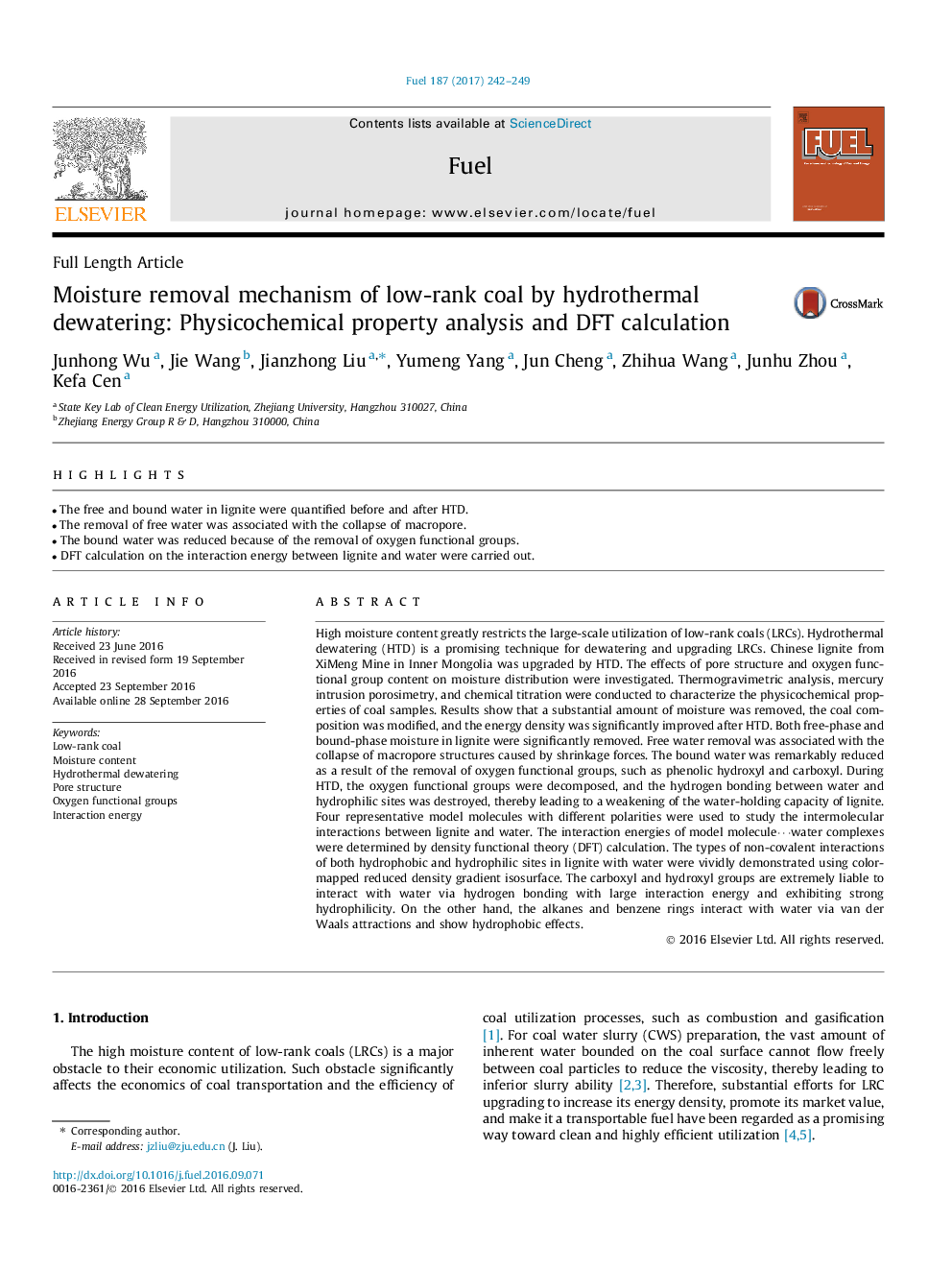| کد مقاله | کد نشریه | سال انتشار | مقاله انگلیسی | نسخه تمام متن |
|---|---|---|---|---|
| 6475951 | 1424977 | 2017 | 8 صفحه PDF | دانلود رایگان |

- The free and bound water in lignite were quantified before and after HTD.
- The removal of free water was associated with the collapse of macropore.
- The bound water was reduced because of the removal of oxygen functional groups.
- DFT calculation on the interaction energy between lignite and water were carried out.
High moisture content greatly restricts the large-scale utilization of low-rank coals (LRCs). Hydrothermal dewatering (HTD) is a promising technique for dewatering and upgrading LRCs. Chinese lignite from XiMeng Mine in Inner Mongolia was upgraded by HTD. The effects of pore structure and oxygen functional group content on moisture distribution were investigated. Thermogravimetric analysis, mercury intrusion porosimetry, and chemical titration were conducted to characterize the physicochemical properties of coal samples. Results show that a substantial amount of moisture was removed, the coal composition was modified, and the energy density was significantly improved after HTD. Both free-phase and bound-phase moisture in lignite were significantly removed. Free water removal was associated with the collapse of macropore structures caused by shrinkage forces. The bound water was remarkably reduced as a result of the removal of oxygen functional groups, such as phenolic hydroxyl and carboxyl. During HTD, the oxygen functional groups were decomposed, and the hydrogen bonding between water and hydrophilic sites was destroyed, thereby leading to a weakening of the water-holding capacity of lignite. Four representative model molecules with different polarities were used to study the intermolecular interactions between lignite and water. The interaction energies of model moleculeâ¯water complexes were determined by density functional theory (DFT) calculation. The types of non-covalent interactions of both hydrophobic and hydrophilic sites in lignite with water were vividly demonstrated using color-mapped reduced density gradient isosurface. The carboxyl and hydroxyl groups are extremely liable to interact with water via hydrogen bonding with large interaction energy and exhibiting strong hydrophilicity. On the other hand, the alkanes and benzene rings interact with water via van der Waals attractions and show hydrophobic effects.
Journal: Fuel - Volume 187, 1 January 2017, Pages 242-249